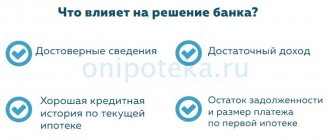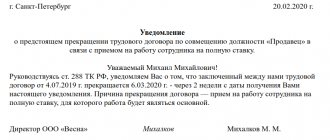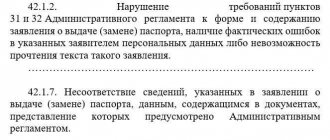On July 1, 2021, a new GOST for document processing came into force, which contains amendments affecting electronic document management, the procedure for contacting the addressee, rules for initialing, etc. The specified regulatory document has been supplemented with new schemes for the location of details.
The application of state regulations when preparing document forms is carried out at the request of the participants in the turnover, however, compliance with the unified form facilitates the process of interaction and speaks of the manifestation of corporate ethics, solidarity, and loyalty.
GOST for document preparation: why and when to follow the rules
GOST for the preparation of text documents is a set of rules that allows each participant in legal relations to adhere to a unified template when drawing up an appeal to a third party.
The rules given in the stipulated GOST are aimed primarily at companies and are advisory in nature, that is, counterparties can deviate from them without fear of being held accountable.
When developing unified requirements for documents, the legislator primarily pursued the following goals:
- Unity of document flow;
- Correctness and clarity of presentation of information;
- Quick and correct understanding of information by the counterparty;
- Separation of the main from the secondary;
- Ability to quickly search for a key in a document.
The introduction of paperwork standards into the system of relationships, in the context of the entire country, makes it easier for all participants, since if they do not know the basic rules, the company can turn directly to the legislative regulations and not waste time creating existing forms.
Recommendations for drawing up documents described in GOST are especially useful if:
- There are no corporate standards;
- The document must be drawn up in the most understandable form;
- Competitors and partners strictly follow the regulations;
- A priori, unity of document flow is preferable;
- The company wants to raise its authority and reach a new level;
- Questions arise about the correctness of the request or other document.
General points
From July 1, 2021, the order of the Federal Agency for Technical Regulation and Metrology dated April 29, 2019 No. 175-st will come into force, which provides for two innovations:
- GOST 2.105-95 loses force as a national standard, but remains valid as an interstate standard;
- GOST R 2.105-2019 is recognized as national.
Additionally adopted in this area:
- GOST R 2.106-2019 “Unified system of design documentation. Text documents", approved. by order of Rosstandart dated April 29, 2019 No. 176-st;
- GOST R 2.601-2019 “Unified system of design documentation. Operational documents", approved. by order of Rosstandart dated April 29, 2019 No. 177-st;
- GOST R 2.610-2019 “Unified system of design documentation. Rules for the implementation of operational documents", approved. by order of Rosstandart dated April 29, 2019 No. 178-st;
- GOST R 2.711-2019 “Unified system of design documentation. Scheme of dividing the product into its component parts,” approved. by order of Rosstandart dated April 29, 2019 No. 179-st.
In practice, when performing work, the standards set by the customer are applied, since the requirements of ESKD (unified systems of design documentation) and, in general, GOSTs in the Russian Federation are considered voluntary. If documentation is prepared for the Russian market, use the design rules from the national code. If you are preparing papers for partners from the EAEU, it is worth continuing to work according to GOST 2.105-95. In situations where documents are used by companies from both Russia and other countries, indicate the name of the standard that was used in their preparation.
What is described in GOST
Having decided to adhere to state standards when composing outgoing correspondence, you should take into account the following tips:
- The text of the document must be correctly formatted, taking into account the recommended indents and spacing;
- A specific list of standard fonts has been established;
- When offering a copy of a document for review, you must indicate the location of its original;
- The signature and seal on a document should not merge;
- It is recommended that the title of the document indicate both its title and the content of the appeal;
- As a general rule, the initials of the addressee are placed after the surname, but if this is a point for signing, then before it;
- The status of the addressee is determined by the case when addressing him in a document:
- Legal entities – nominative (who);
- Individuals – dative (to whom);
- To set o, the upper right corner of each sheet of the document is used;
- It is allowed to certify the paper with a resolution anywhere in the document;
- To avoid filling out the form again, it is better to approve a single form containing all the necessary details.
Details about GOST for document preparation
Font
The Regulations indicate a list of free fonts that are recommended to be used when composing a document, in particular:
- Arial;
- Calibri;
- Times New Roman;
- Verdana.
The preferred font size is set to 12 to 14.
It is also allowed to use fonts similar in style to the base ones.
Information and data presented in tabular form may have a smaller font size than the main text.
Bold font should be used to highlight:
- Header;
- Details;
- Addressee data.
Spacing and indentation
To make the text on paper look orderly and beautiful, you must adhere to the following rules:
- Set the overall paragraph indent to 1.25;
- Compliance with fields:
- 20 mm – top and bottom;
- 10 mm – right;
- 20 mm – left;
- If a document on paper must be stored in an archive for 10 years or more, then the left margin is increased to 30 mm. This procedure is due to the need for subsequent firmware, re-flashing due to the loss of the paper’s original qualities;
- The interval is set according to the following parameters:
- Letter spacing is normal;
- Single space between words;
- The document is scaled down using 2 spacing;
- Line spacing – from 1 to 1.5;
- Details given on several lines – 1 interval;
- If a document contains a group of details, an additional space must be maintained between each of them to separate the information.
Alignment
When drawing up a document in accordance with GOST, it is necessary to use width alignment. To avoid distortion of intervals and the appearance of large spaces, you should enable the wrap function when aligning.
In cases where text or details need to be included in the left corner, the rule of maximum line length is a multiple of 7.5 cm. That is, the text of each line can occupy no more than 1/3 of an A4 sheet.
Information presented in the center of the document should occupy no more than 12 cm (half an A4 sheet).
Requisites
Document details according to GOST contain the following information about the sender:
- Company logo or trademark – top center or left;
- The unofficial name of the enterprise, if it is more common in the customs of business transactions with counterparties;
- The title of the document is at the top in the middle of the sheet;
- Mandatory (basic) company details are contained at the top of the document:
- Company name;
- Registration address;
- TIN;
- OGRN;
- Email, fax;
- Other contact details;
- The document is always dated not on the day it was drawn up, but on the day it was signed by an authorized employee. The place for the indicated mark is the top margin of the sheet. It is customary to use the date format: day-month-year.
Location of details on the title page of the document:
Rules for addressing the addressee
When drawing up a document, the following rules apply to the recipient of the appeal (addressee):
- On paper, the addressee’s details should be located either under the sender’s details or in the upper corner of the sheet;
- When indicating the addressee, different cases may be used, in particular:
- Addresses to individuals and individual entrepreneurs are written in the dative case (to whom).
For example:
Executive Director
Roshtroy LLC
Tretyakov V.I.
- The addressee-company is addressed in the nominative case (who).
For example:
Ministry of Health of the Russian Federation;
- A document intended for a subsidiary of a company, branch or division must be drawn up using the nominative case to the name of the company and the dative case to the division and position of the authorized specialist.
For example:
LLC Agrocomplex Nikolaevsky
Head of the packaging department
Ivanov S.V.
- According to the new GOST, changes have also been introduced regarding the initials of the addressee. If previously the recipient's initials were placed before the surname, now they are after the surname.
For example:
Previous edition: I.N. Nikolaeva;
Current edition: Nikolaeva I.N.
It is allowed to use “Ms,” “Mr” (Mrs. and Mr., respectively) in address.
How to compose a document for several recipients
According to office work standards, no more than 4 addressees can be indicated in one document. If the appeal is aimed at a larger circle of people, then one of the following alternatives is used:
- The list of addressees is compiled on separate paper and a copy of the application document is attached;
- The addressees are anonymized (without indicating last names) and are united only by a single position. For example:
To the managers of the North Baikal division of Roshstroy LLC.
The rules for document execution for several addressees presented in GOST are in practice only applicable to requests on paper, since electronic forms:
- They may not contain the addressee’s details at all;
- Without prejudice to the information content, the number of addressees may be indicated in excess of that established by the regulations - more than 4;
- Electronic correspondence and types of documents do not allow you to provide information about addressees in a separate list.
If the document contains a trade secret
Some documents may contain information related to trade secrets. That is why one of the amendments to the new GOST affects this information (in the earlier edition, trade secrets were not mentioned at all).
Oh, “confidential”, “for official use only”, the standard recommends putting it in the upper right corner of the title page, however, due to the seriousness of the information, it is more appropriate to leave such marks on each sheet of the document.
The essence of the document title
The title of the document should be clear and reveal the essence of the appeal.
For example: Order to reduce the probationary period for Sidorov I.A.
The following regulations apply to the title:
- Alignment – center or left;
- Small documents (no more than 5 lines) can be compiled without a heading (regardless of the format).
Link to other documents
Papers, appeals based on a legally defined norm or local act of the company must necessarily contain an appropriate reference indicating the full details of the regulatory document, including:
- Name;
- Number of the legal act;
- Date of its adoption;
- Compiled by
Annexes must be listed in the body of the main document, and also numbered indicating the total number of pages.
From what person
When drawing up official documents, it is important to correctly identify the person from whom the information comes. Below are some examples:
| Title of the document | Appeal | Example |
| Business letter, memo | First person or third person singular | The purchasing department submits the proposal; Please forward; Please take action; We consider it appropriate |
| Order | First person singular | I order |
| Document on behalf of the collegial governing body | Third person (singular) | The meeting of shareholders made a decision |
| Protocol | Third person, plural | Listened, approved, decided, accepted |
| Documents containing information about any facts | Third person, any number | The commission assessed it, the procurement department approved it |
GOST requirements
GOST R 7.0.97-2016 came into force on 01/07/18, and it is this that establishes the basic requirements for the preparation of documents in office work. Let's take a quick look at what this document is.
It is quite voluminous, with detailed information intended for clerks, secretaries, and management. The requirements are divided into the following order:
- General requirements for creating a document. This includes: characteristics of the material media of the document (paper, electronic), page numbering order, recommended fonts for typing, indents, spacing, alignment, line length - in numbers, highlighting important nuances.
- Composition of details. The first group 01-08 includes the coat of arms, trademark, service mark, document form code, name of the organization, its divisions, positions of the author of the document, reference data of the organization. The second group 09-16 combines information about the document: name, date, number, link to registry. number where it was compiled, a note on access restrictions, to whom it is addressed, a stamp confirming the approval. The third group 17-18 are the details of the text title and the text itself. The fourth group 19-30 – various endorsement, resolution, control, approval marks, signature, seal, information about the performer. For each detail, recommendations are given on how it is formatted and where it is located in the document. For example, it is emphasized that the name of the type of document can be omitted only if it is a business letter, and the place of preparation can be omitted if an indication of the location of the organization is already in its name.
- Forms. Separately, the legislator characterizes document forms, the recommended format for ordinary documents, for resolutions, and maximum field sizes. There is a description of how the details should be placed on a particular form and what type of paper should be used.
In appendices A, B are given:
- layout of the document details on the title page;
- Samples of organizational document forms with the location of details.
On a note! GOST pays a lot of attention to the issues of electronic document management, due to its increasingly widespread use.
Some nuances
- The position of the address to which the appeal is sent should be written with a capital letter if the document needs to be drawn up in accordance with GOST;
- GOST establishes the need to address the addressee “Dear!” An exclamation mark is required.
For example: Dear Svetlana Igorevna!
This form is strictly observed by all departments and government bodies, however, private individuals can follow this procedure if they wish;
- Throughout the text of the document, the initials of the addressee are always placed after the surname, however, in the place where a signature is required, his initials are indicated before the surname;
- The use of a company letterhead frees the organization from re-indicating similar details at the end of the document. In this case, it is enough to certify the paper only with the signature of an authorized person and its transcript;
- If a document must be certified by several officials, then the place of signature of each of them is placed one below the other in compliance with the hierarchy. That is, the person whose position is higher puts his signature on the top line and so on in descending order of subordination;
- If the document is signed by a deputy, a representative by proxy of an authorized person, then it is necessary to put a stamp or manually make adjustments to the surname and initials;
- When using an electronic digital signature, the specified mark must be placed in the same place where the document requires a manual signature;
- The electronic signature should not overlap the text of the document;
- GOST establishes a requirement that the organization’s seal cannot be placed over a signature, despite the fact that many clerks and personnel workers persistently do the opposite;
- If necessary, the document may contain information about its author (as a rule, the text is smaller in size compared to the main one):
- FULL NAME;
- Contact number;
- Job title;
- Email;
- When certifying a copy, the corresponding mark (the copy is correct, correct) is placed at the bottom of the document, although, contrary to GOST, many organizations allow it to be placed at the very top of the paper;
- The copy of the document must contain information about where the original is stored. Any clarifying and certifying information (stamp, case number) is welcome;
- Statements, memos and other local documents requiring resolution are certified by an authorized official anywhere on the sheet indicating:
- Agreed, refused, no objection;
- FULL NAME;
- Signature;
- Date of;
- Large documents consisting of several pages must be numbered starting from the second sheet, and in some cases also stitched. The numbering is placed in the center of the top margin of each sheet following the title page, maintaining a 10 mm indentation at the top.
Design methods
You are allowed to complete the following documentation:
- typewritten in accordance with GOST 13.1.002-2003. Interstate standard. Reprography. Micrography. Documents for microfilming. General requirements and standards (put into effect by Decree of the State Standard of Russia dated February 26, 2004 No. 63-st);
- by handwritten method, using the provisions of GOST 2.304-81. Interstate standard. Unified system of design documentation. Drawing fonts (approved by Decree of the USSR State Standard of March 28, 1981 No. 1562);
- using a computer, according to GOST 2.004-88. Interstate standard. Unified system of design documentation. General requirements for the implementation of design and technological documents on computer printing and graphic output devices (approved by Resolution of the USSR State Standard of November 28, 1988 No. 3843);
- on electronic media.
Additionally, the new national standard provides rules for the preparation of electronic text documents (TDE). They can be prepared using standardized information models of programs. Data is either collected independently or automatically generated using specialized software from pre-prepared fragments.
Tips for those who want to follow GOST
In order to accurately follow the paperwork standards, you should first of all familiarize yourself with the text of the regulatory document, since in it you can find not only rules for drafting the text, but also visual diagrams and ready-made forms. This information will be especially useful if the company does not have its own templates or local requirements.
Subsequent approval of uniform forms for each type of document, based on GOST regulations, will save time, significantly reduce labor costs and highlight only the main essence of the circulation.
Forms in electronic format must be certified with a digital signature and protected against changes.
Despite the dispositive nature of using unified standards for document preparation, the application of GOST rules helps to increase authority, since they have long been enshrined in business customs and indicate compliance with corporate etiquette.









